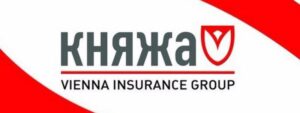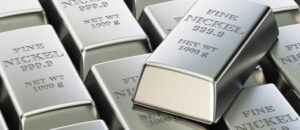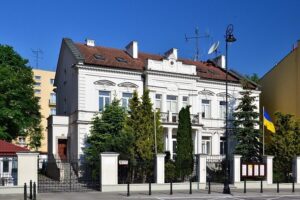
Consulting agency UkrAgroConsult forecasts a 5.7% decline in sunflower harvest in the 2025 season to 13.3 million tons from 14.1 million tons in the previous forecast due to drought in southern and eastern Ukraine, the agency’s press service reported.
“Crop losses are mainly observed in the southern and eastern regions, where drought has significantly affected crops. In contrast, the situation is more favorable in the northern and western regions, where rains have been regular. Sunflower yields are expected to increase during harvesting in the northwestern belt, as was the case with wheat and barley,” the agency said.
Analysts added that market estimates of the sunflower harvest range from 12.8 to 13.5 million tons. Therefore, UkrAgroConsult sticks to the upper end of the estimate due to the expansion of acreage in the west and north after the start of the war. However, seed quality is a concern due to diseases caused by rains during harvesting in these regions.
UkrAgroConsult has more optimistic forecasts for corn.
“The main growing regions have sufficient moisture levels, and crops in the south account for a small share. This year’s pollination and grain filling period coincided with more favorable temperatures compared to last year, and periodic rains contributed to crop development,” experts said.
Market estimates of the corn harvest range from 28 million tons to 35 million tons, but at the end of July, UkrAgroConsult raised its forecast by 2 million tons to 32.5 million tons, or 6.6%, which is one of the highest figures on the market.
UkrAgroConsult’s wheat harvest forecast remains stable at 22 million tons. As of August 7, almost 15 million tons had been harvested from 74% of the planted area. The remaining 26% is in regions with the highest yields, which gives grounds for optimism, the agency concluded.

Insurance company Knyazha Vienne Insurance Group (Knyazha VIG”, Kyiv) in January-June 2025 collected UAH 1.808 billion of insurance payments, which is 58.61% more than in the same period a year earlier, net premiums amounted to UAH 1.161 billion (+17.21%). This information has been published by Standard-Rating, having confirmed the financial strength/credit rating of the insurer at the level of “uaAA+” following the results of the specified period.
According to the RA website, for the specified period receipts from individuals have grown by 61,71% – up to UAH 1,310 billion, and from reinsurers – by 77,13%, up to UAH 3,943 mln.
According to the results of the first half of 2025, the share of individuals in the gross premiums of the company amounted to 72,43%, and the share of reinsurers – 0,22%.
Insurance payments sent to reinsurers, for the first half of 2025 compared to the same period of 2024 have increased more than in 4,3 times – up to UAH 646,786 mln. Thus, the ratio of reinsurance companies’ participation in insurance premiums has increased by 22,69 p.p. up to 35,78%. – up to 35,78%.
The volumes of insurance payments and indemnities made by the company in the first half of 2025, compared to the same period of 2024, have increased by 39,11% – up to UAH 615,675 mln, the level of payments has decreased by 4,78 p.p. – to 34.05%.
Operating profit for 6M. 2025 increased 14.27 times to UAH 109.577 mln, and net profit increased 6.4 times to UAH 144.258 mln.
Assets of the company as of July 1, 2025 increased by 28.27% – to UAH 2.796 billion, shareholders’ equity – by 33.83% – to UAH 602.017 million, liabilities – by 26.82% – to UAH 2.194 billion, cash and cash equivalents – by 5.81% – to UAH 86.279 million.
RA notes that as of the beginning of Q3 2025 the company had a satisfactory level of capitalization (27,44%), and cash covered 3,93% of its liabilities. At the same time, on the reporting date the insurer has made current financial investments in the amount of UAH 1,404 billion, which consisted of government bonds (77,89% of the investment portfolio), as well as of deposits in banks with a high level of credit rating (22,11% of the portfolio). Liquid assets have covered 67,95% of insurer liabilities.
Private JSC IC Knyazha Viena Insurance Group is a part of NFG Vienna Insurance Group Ukraine, the main shareholder of which is Vienna Insurance Group AG Wiener Versicherung Gruppe (Austria).

The corporatization of the state-owned enterprise “Forests of Ukraine,” provided for in the draft government action program published on Monday, involves transforming the state-owned enterprise into a joint-stock company, with 100% of the shares belonging to the state, Yulia Pliska, director of the GR and corporatization department of the state-owned enterprise, told Interfax-Ukraine.
According to her, the State Forestry Agency of Ukraine (SFAU) has developed a special bill for the corporatization of the state-owned enterprise “Forests of Ukraine,” which is currently being reviewed by the relevant ministry. Virtually all of Ukraine’s largest state-owned companies have been corporatized under a special law. If the corporatization of State Enterprise “Forests of Ukraine” takes place without a special bill, it will be necessary to legislate certain aspects of the process that will regulate the specifics of the enterprise’s transformation into a joint-stock company.
“The advantages of corporatization are a management model that is understandable to international investors, which is a prerequisite for attracting investment. An independent assessment of assets will open up the possibility of attracting funds from international financial organizations: the World Bank and the European Bank for Reconstruction and Development (EBRD). Unlike a unitary enterprise, a joint-stock company has greater flexibility in implementing investment projects. In addition, a joint-stock company has the right to direct funds from the sale of illiquid assets to the development of the company,” said Pliska.
The corporatization of Lisy Ukrainy is expected to accelerate the introduction of new modern technologies, upgrade the material and technical base, and thus increase production efficiency. However, the state will remain the owner of forest lands, which, as before, will not be subject to privatization.
As reported, the Cabinet of Ministers, in its draft Action Program published on Monday, named the adoption of new legislation on the timber market and the corporatization of the state-owned enterprise Lisy Ukrainy as one of its priorities.

In January-July 2025, Ukraine reduced imports of nickel and nickel products by 26.7% compared to the same period in 2024, to $12.446 million (in July – $1.875 million), while exports of nickel and nickel products amounted to $746,000 (in July – $139,000) compared to $423,000 for the first seven months of 2024.
Nickel is used in the production of stainless steel and for nickel plating. Nickel is also used in the production of batteries, in powder metallurgy, and in chemical reagents.

Ukraine will expand its diplomatic presence around the world in 2025-2026, according to the draft Action Program of the Government in the sphere of responsibility of the Ministry of Foreign Affairs, which was made public on Monday.
According to the draft published on Monday, four more Ukrainian embassies and up to nine new consular offices are to open by the end of 2025.
In addition, there are plans to upgrade the status of two existing consulates and approve the decision to establish 10 to 20 honorary consulates of Ukraine.
By the end of 2026, three new diplomatic missions are expected to begin operating in Latin American countries.

In January-July of this year, Ukrainian enterprises increased imports of copper and copper products in value terms by 29.1% compared to the same period last year, to $109.984 million.
According to statistics released by the State Customs Service of Ukraine on Tuesday, exports of copper and copper products during the period increased by 12.7% to $55.437 million.
In July, copper imports amounted to $16.821 million, while exports amounted to $9.357 million.
Copper is widely used in electrical engineering, pipe manufacturing, alloy production, medicine, and other industries.